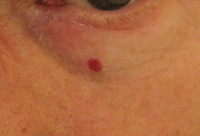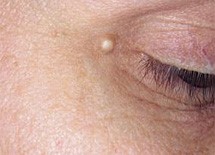Treatment
Electrolysis is the only safe method of permanent hair removal. The process begins by introducing a fine wire needle (probe or filament) into the hair follicle. Then an electric current is passed down the needle, destroying the hair root. The loosened hair may then be removed with tweezers.
Electrolysis has been around since 1875 when Dr. Charles Michel, Ophthalmologist, first used it to successfully remove ingrown eyelashes from a patient.
With a track record of over 139 years, Electrolysis is the longest established method of permanent hair removal and has the most effective results!
Electrolysis is the ONLY method of PERMANENT hair removal and is approved by the FDA as such.





